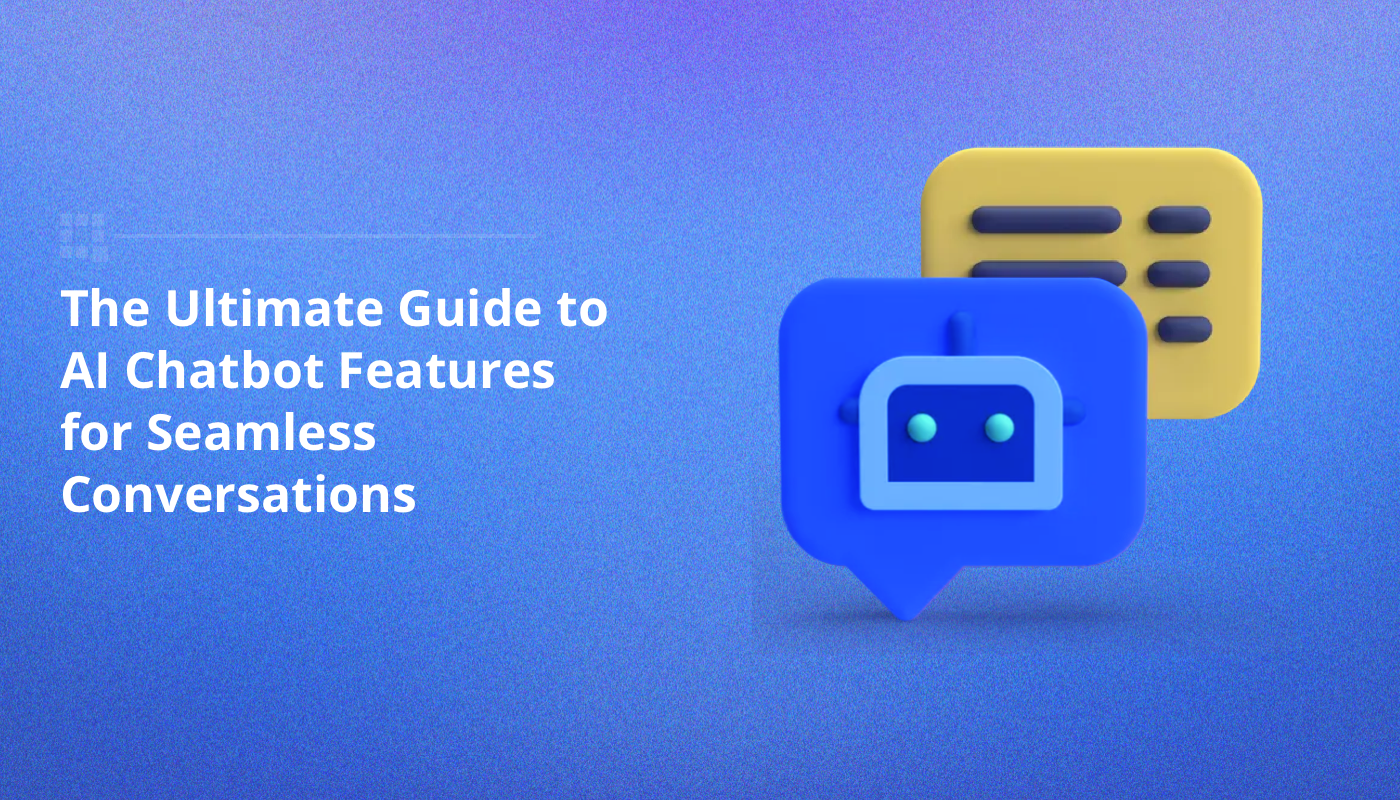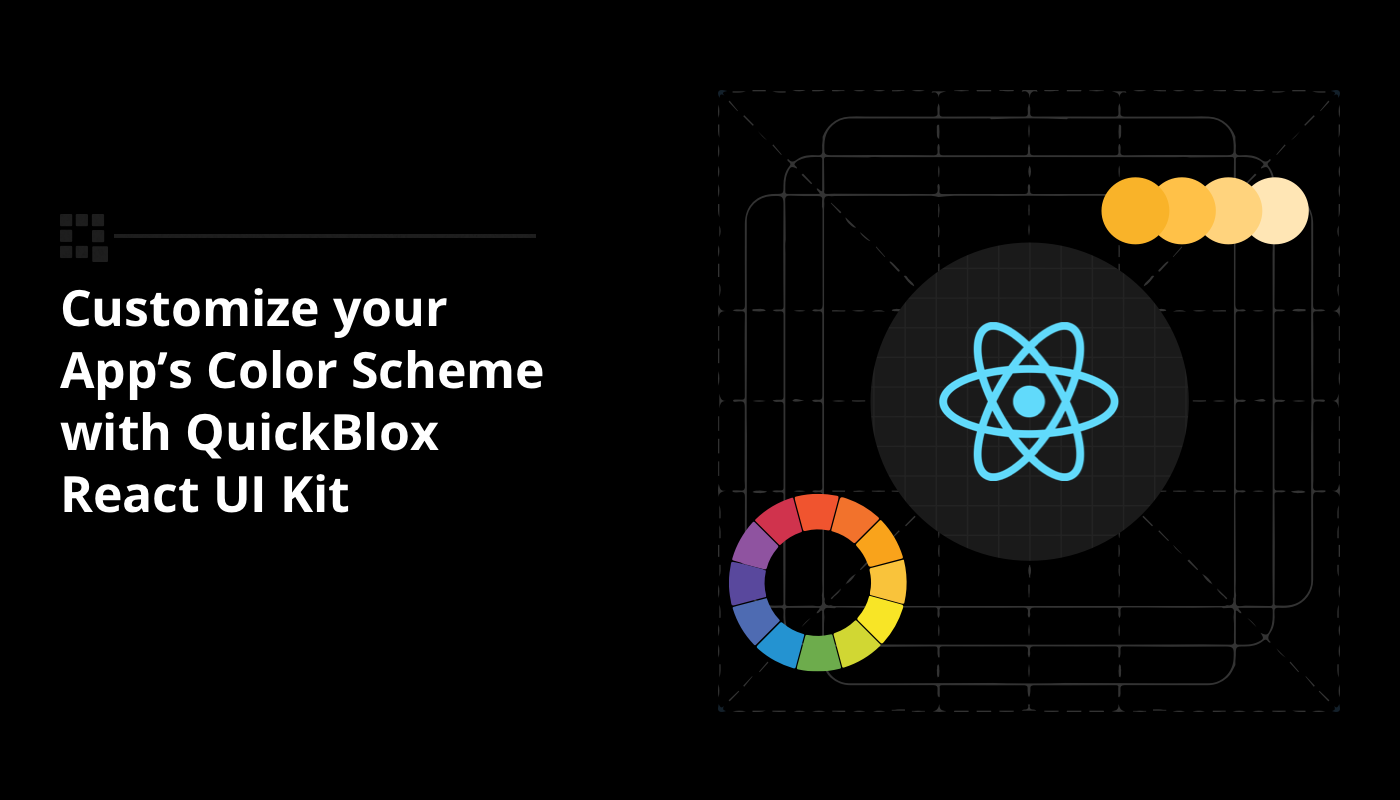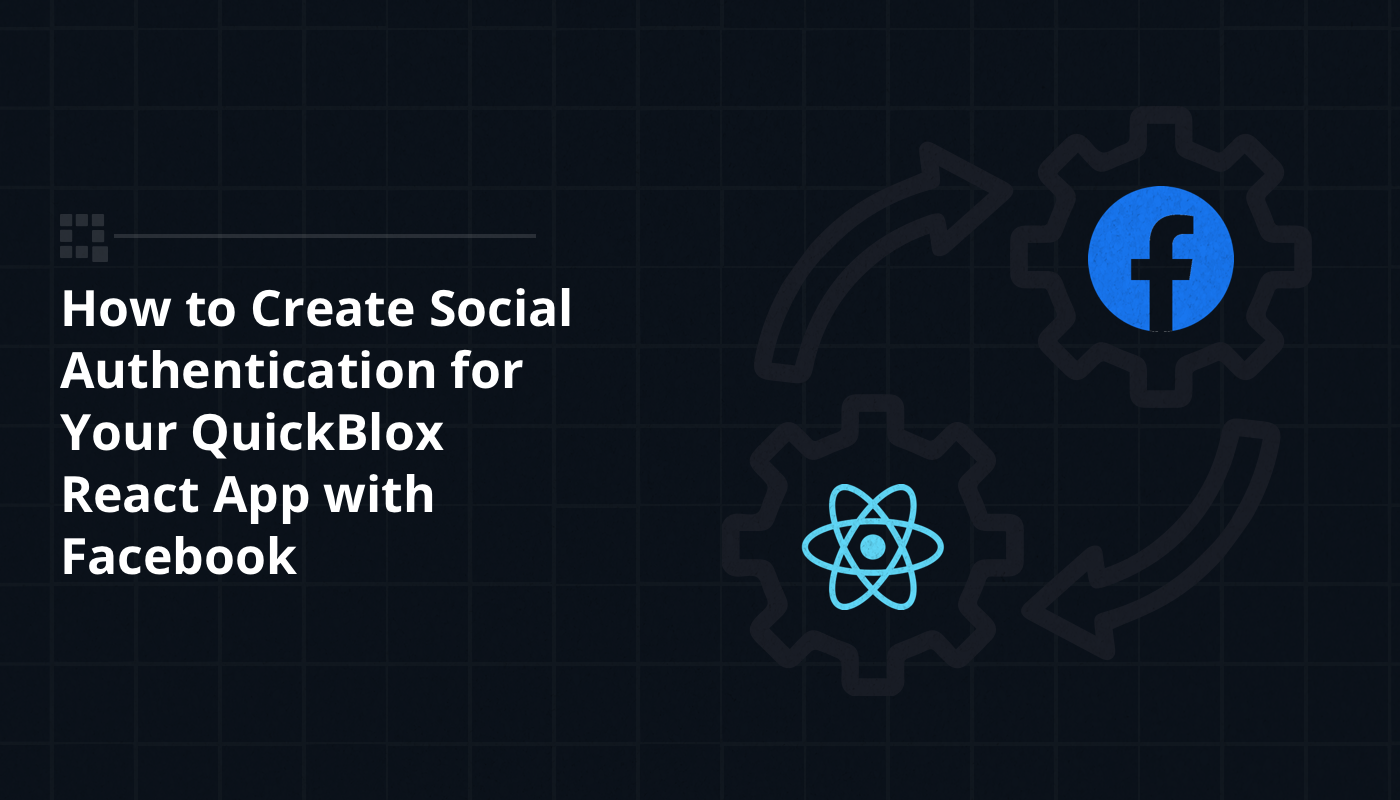
Summary: This article explores key AI chatbot features that power natural and informative conversations. It covers four key areas, understanding, conversational management, engagement & experience, and functionality, which all contribute to a seamless user experience. Finally, it introduces QuickBlox SmartChat Assistant, an AI chatbot solution for businesses to easily build and integrate chatbots.
Table of Contents
Introduction
With the chatbot market expected to expand annually by 23.3%, reaching $15.5 billion by 2028, we can expect to encounter AI-powered chatbots in a range of contexts spanning healthcare, travel, retail, banking, education and much more. Chatbots have emerged as indispensable tools for businesses seeking to enhance customer interactions, streamline operations, and drive growth. A whopping 58% of business-to-business companies and 42% of business-to-consumer organizations currently use chatbots on their sites.
These AI-powered conversational agents have evolved from simple rule-based systems to sophisticated entities capable of understanding natural language, context, and even emotions. As organizations increasingly integrate chatbots into their customer service, marketing, and sales strategies, the demand for advanced features that facilitate seamless conversations has surged.
In the following guide, we will explore AI chatbot features that enable smooth and engaging interactions between bots and users.
Learn more about, How AI Chatbots Work: A Comprehensive Guide
Top 4 AI Chatbot Features For Seamless Conversations
AI chatbot features are the tools and functionalities that enable a chatbot to have natural and informative conversations with users. In the following, we will explore these features under four broad categories:
- Understanding
- Conversational Management
- Engagement and Experience
- Functionality
Understanding: The Foundation for Intelligent Conversation
At the heart of every exceptional AI-based chatbot lies a deep understanding of human communication. This is where features like Natural Language Processing (NLP) and Machine Learning come into play, empowering chatbots to interpret user intent and meaning with remarkable accuracy. By incorporating a strong foundation in understanding, chatbots no longer rely on scripted responses and can instead engage in attuned and meaningful conversations. This not only improves user satisfaction but also paves the way for a more intelligent and adaptable virtual assistant.
Natural Language Processing (NLP):
The human language can oftentimes be riddled with inconsistencies and errors including slang, sarcasm, typos, and informality. NLP acts as a chatbot’s translator, allowing it to understand the true meaning behind a user’s message. Here’s how it works:
- Intent Recognition: NLP can identify the user’s underlying goal or question, even if phrased unconventionally. For instance, if a user asks, “What’s good to eat around here?” NLP can recognize the intent to find restaurants.
- Entity Extraction: NLP can pinpoint key details within a message, such as locations, products, or dates. This allows the chatbot to gather the necessary information to fulfill the user’s request.
Because chatbots can handle a wide range of user expressions and phrasings, thanks to NLP, that means there are fewer misunderstandings and more accurate responses. This in turn creates a more natural and engaging conversational experience.
Machine Learning:
Machine Learning (ML) enables a chatbot to learn and adapt over time. ML algorithms analyze user interactions and chatbot performance to continuously improve. Here are some key components of that process:
- Enhanced Intent Recognition: Over time, the chatbot becomes more adept at understanding even complex or nuanced user requests.
- Improved Dialogue Management: ML can optimize conversation flow based on past interactions, leading to smoother and more efficient dialogues.
- Personalized Interactions: The chatbot can learn user preferences and tailor responses accordingly, creating a more personal experience.
ML allows chatbots to become more intelligent and helpful with each interaction, which reduces the need for manual intervention and rule updates. Ultimately, users will experience a constantly evolving and improving chatbot.
Learn more about, The Evolution of AI Smart Chatbot Assistants in Customer Service
Conversational Management: Guiding a Seamless Dialogue
Imagine a conversation where you constantly have to repeat yourself or get bounced around with irrelevant responses. This is not an ideal scenario. Thankfully, effective conversation management transforms a chatbot from a robotic script follower into a natural and engaging conversational partner. Let’s explore the key features that make this happen:
Multi-Turn Dialogue Management:
This powerful feature ensures that chatbots don’t suffer from memory lapses mid-conversation. Here’s how it works:
- Context Retention: The chatbot remembers the conversation history, including the user’s goal and any choices made. This allows it to build upon what’s been discussed and provide relevant responses.
- Dialogue Flow Control: The chatbot guides the user towards a resolution, understanding where they are in the conversation (e.g., asking clarifying questions, offering options, finalizing a request) and navigating the interaction accordingly.
As a consequence of these features, users feel heard and understood as the conversation progresses naturally. It also means that chatbots can handle complex requests involving multiple steps, leading to increased efficiency and fewer frustrating misunderstandings.
Dialogue Management Techniques:
Multi-turn dialogue management is achieved through several clever techniques:
- Dialogue State Tracking: The chatbot keeps a record of the conversation’s current state, like the user’s goal, selections made, and missing information. This allows it to pick up where things left off and avoid repetitive questions.
- Intent Recognition Across Turns: Even if a user’s intent is spread across multiple messages, the chatbot can recognize it. For example, if a user asks about “restaurants with outdoor seating” and then follows up with “in the downtown area,” the chatbot should understand the complete request.
By mastering conversation management, chatbots can guide users through a dialogue towards their goals with a smooth and natural flow.
Learn more about, Top AI Chatbot Examples: Redefining the Way We Communicate
Engagement and Experience: Crafting Captivating Conversations
Chatbots aren’t just about efficiency; they can also be powerful tools for building user engagement and fostering a positive brand experience. Here are some chatbot features that make interactions feel personal and enjoyable:
Personality and Tone
Imagine a helpful friend guiding you through a process. That’s the ideal personality for your chatbot. You can define the tone (informative, humorous, professional) and tailor your chatbot’s responses to resonate with your target audience.
A relatable chatbot personality creates a more enjoyable user experience. Users feel a connection, making them more receptive to information. What’s more, providing a consistent tone reinforces brand identity.
Emotional Intelligence
Chatbots that incorporate emotional intelligence are capable of creating more human-like and engaging interactions. With new technology around sentiment analysis chatbots can:
- Recognize user sentiment: Analyze the user’s words and tone to identify emotions like frustration or excitement.
- Respond empathetically: Adapt responses to acknowledge the user’s feelings and provide reassurance or a positive tone.
By interacting with emotionally aware chatbots, users can feel valued and understood, leading to increased satisfaction. Chatbots can de-escalate tense situations and build trust. A popular example of this feature in action is Replika, a emotionally attuned AI chatbot designed “for anyone who wants a friend” With this emotionally sophisticated chatbot you can, according to its makers,”form an actual emotional connection, share a laugh, or chat about anything you like!”
Proactive Engagement
Don’t let the conversation lull. Proactive engagement features keep users interested and guide them towards helpful resources. This can include:
- Suggestive prompts: Offer relevant options or next steps based on the conversation.
- Informative content delivery: Share bite-sized knowledge or tips related to the user’s inquiry.
- Personalized recommendations: Suggest products, services, or content based on user preferences (if applicable).
Voice Recognition
Imagine talking to a chatbot directly and having it understand your requests perfectly. Voice recognition technology empowers your chatbot to convert spoken language into text. Here’s how it works:
- Speech-to-Text Conversion: Advanced algorithms analyze the user’s voice, deciphering words and even recognizing accents or background noise.
- Intent Recognition: Similar to text-based interactions, the chatbot interprets the meaning behind the user’s spoken words to identify their goal or question.
Once your chatbot understands the user’s spoken request, speech synthesis technology allows the chatbot to convert text into natural-sounding speech. This creates a more human-like interaction and improves user experience. Furthermore, you can tailor the chatbot’s voice to match your brand personality, making it sound friendly, informative, or professional depending on your needs. This is a developing technology, but already we’re seeing products like Amazon Transcribe hit the market.
By focusing on engagement and experience, you can transform your chatbot from a basic tool into a captivating conversational partner that users will actually enjoy interacting with. These features keep the conversation dynamic, prevent drop-off, and create opportunities for upselling or cross-selling (if relevant).
Learn more about, How AI Virtual Smart Chat Assistants Improve User Experience
Functionality: Empowering your ChatBot for Real World Tasks
Chatbots can be more than just conversation partners; they can become powerful assistants capable of completing tasks and accessing information on your behalf. Here, we explore functionality features that elevate your chatbot from communicator to action-oriented hero:
Integrations
It’s essential that chatbots can access the very information it needs to help you. Integrations make this possible, allowing your chatbot to connect with other tools and platforms your business uses. This could include:
- CRM systems: Access customer data to personalize interactions and provide account-specific information.
- Inventory management systems: Check product availability in real-time and facilitate order placement.
- Payment gateways: Process secure transactions directly within the chatbot conversation.
By enabling this feature chatbots can offer a wider range of services and complete tasks more efficiently. Integrations streamlines internal processes and reduces reliance on human intervention for routine tasks. Plus, users get a seamless experience without needing to switch between different platforms.
Omnichannel Support
People today expect to interact with businesses on their preferred channels. Omnichannel support ensures your chatbot is available across various platforms, including:
- Website chat: Provides immediate assistance to visitors browsing your website.
- Messaging apps: Enables users to interact with the chatbot through familiar platforms like WhatsApp or Facebook Messenger.
- Social media: Responds to inquiries and messages received on social media channels.
Making your chatbot available across platforms increases accessibility for users who prefer specific communication channels, caters to a wider customer base and expands reach. Furthermore, it provides consistent brand experience across different touchpoints.
Conclusion: Building the Chatbot of your Dreams
The world of AI chatbots is brimming with potential, and by incorporating the features explored in this guide, you can craft a virtual assistant that fosters seamless and engaging conversations. From the power of natural language processing to the magic of voice interaction, these features empower chatbots to understand user intent, navigate complex dialogues, and even adapt over time.
Remember, a successful chatbot isn’t just about technology; it’s about creating a positive user experience. By focusing on functionalities that add value and personalize interactions, you can transform your chatbot from a basic tool into a trusted companion.
Now that you’re armed with this knowledge, it’s time to take the leap! But how do you choose the right chatbot for your business? Look for chatbot development platforms that offer features like those discussed here, and consider solutions that prioritize customization and ease of use.
Here at QuickBlox, we understand that not every business has the resources for a complex chatbot build-out. That’s why we offer SmartChat Assistant, an AI chatbot solution that can be:
- Customized: Tailor the personality, tone, and responses to perfectly match your brand.
- Trained on Your Data: Fine-tune the chatbot’s understanding of your specific industry and terminology using your own data set.
- Integrated Seamlessly: Effortlessly embed the chatbot into any website or application, making it accessible to your users with minimal technical expertise.
With QuickBlox SmartChat Assistant, businesses of all sizes can unlock the power of AI chatbots and experience the benefits of seamless conversations.
So, what are you waiting for? Start building your dream chatbot today!
Talk to a sales expert
Learn more about our products and get your questions answered.
Contact sales



















